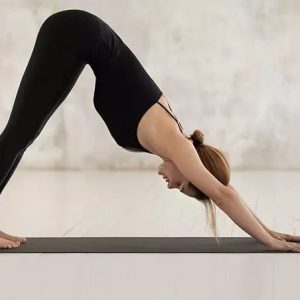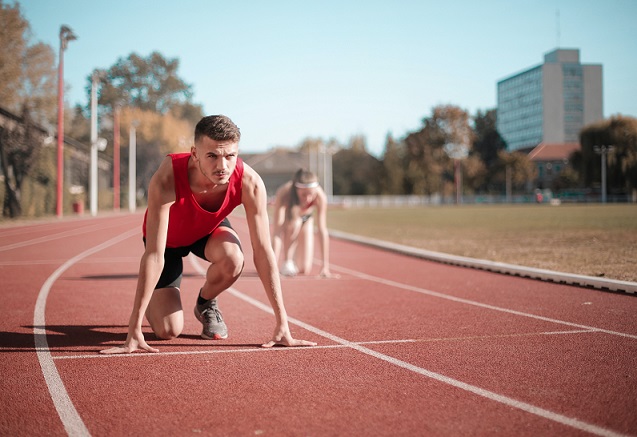If you haven’t exercised for a while or if you are starting a new physical activity, you are likely to experience sore muscles after the workout. Your body is simply saying your muscles need time to recover.
“Typically, delayed onset muscle soreness begins about 12 to 24 hours post-exercise and can peak anywhere between one to three days,” says Murray. The more intense the workout, the longer the muscle healing and rebuilding process may take,” Murray adds.
After all, for your muscles to repair, grow and become stronger, you first have to give them something to repair. Here are five tips for relieving sore muscles:
1) Hamstring Stretch:
Nearly all workouts include some sort of leg movement, so this is an easy stretch you can do to help relieve tightened leg muscles especially after long cardio sessions or kickboxing. The legs also play a role in a lot of tension that can be felt in the lower back, so stretching these areas can provide prevention and relief of flares to the sciatic nerve as well.
a) Advanced Hamstring Stretch for Athletes:
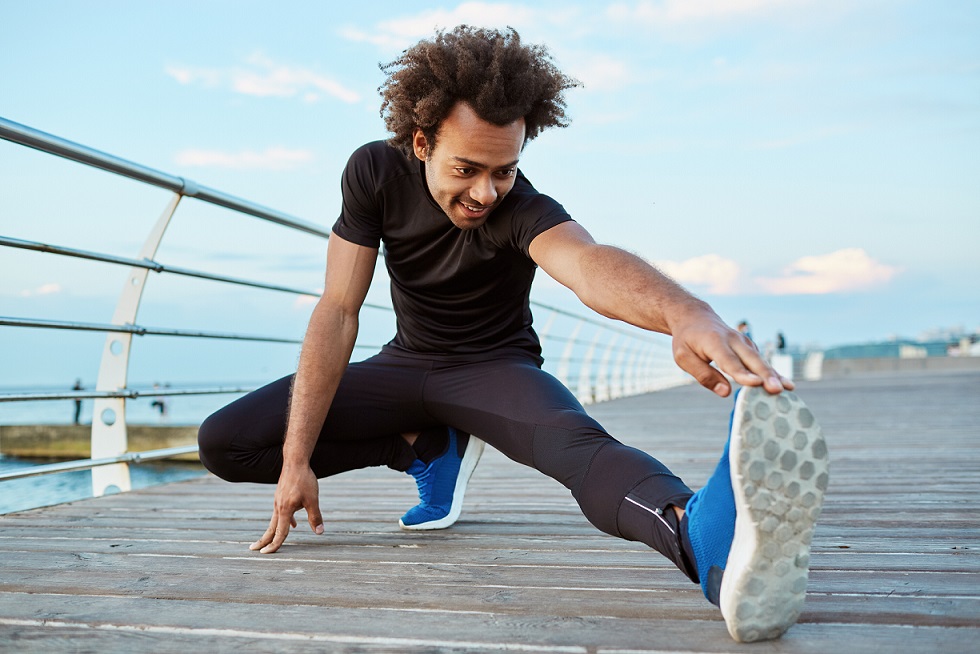
If you are active, try this easy stretch, bend at your hips to bring the front of your trunk towards your thigh. For best results, keep your back straight. A straight back will also provide some protection for your spine.
b) Side Lunge Stretch:
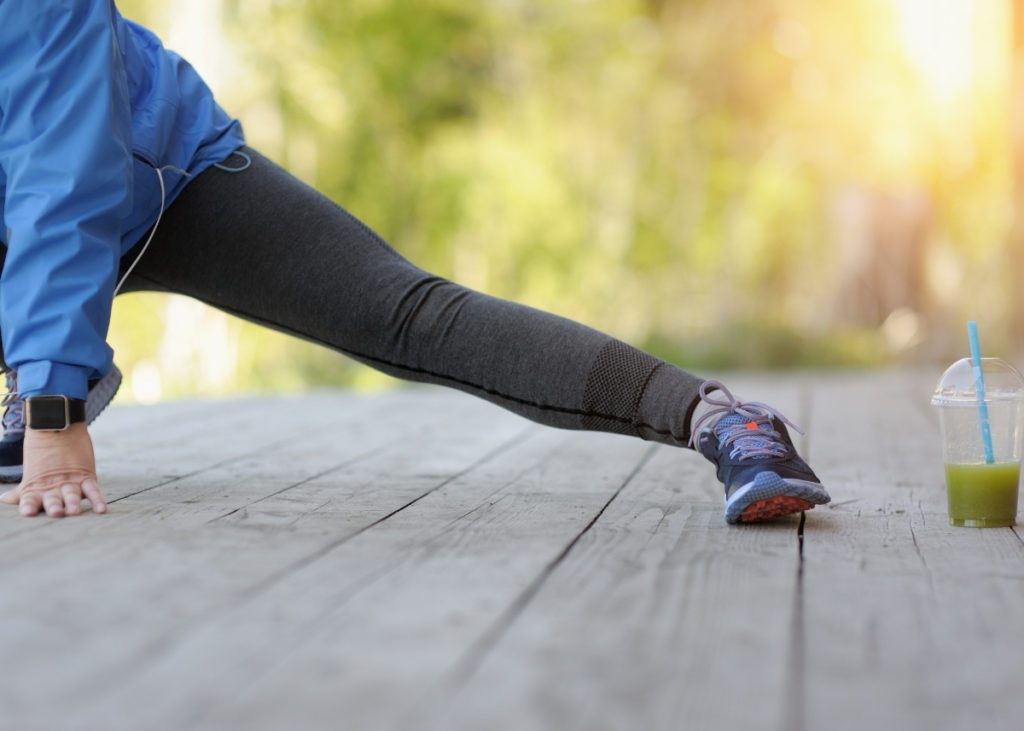
The side lunge is a nice switch from the regular lunges. It reaches the lower body muscles from a different angle compared to regular forward and backward stretches that often neglect the full range of movement used throughout your workouts. It can also add a little extra sculpting and toning to your legs.
c) Squad Stretch:
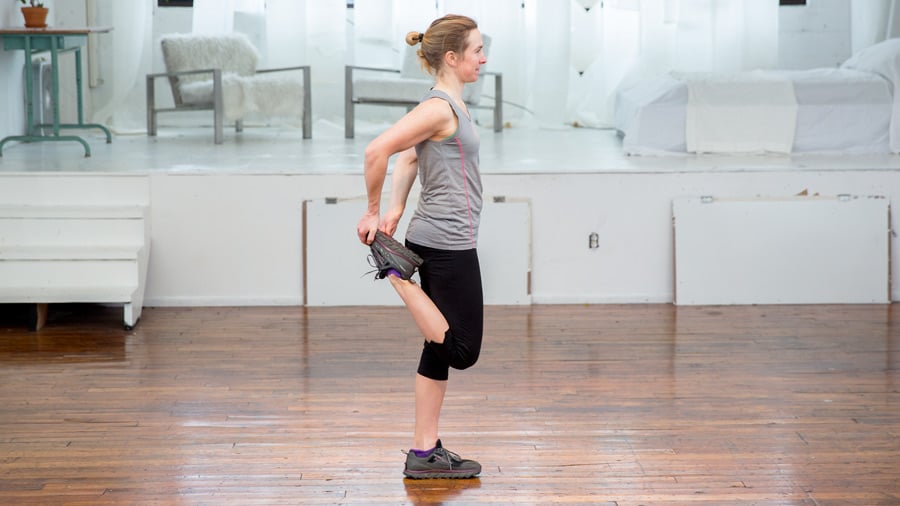
You derive a lot of your running power from your quads so it’s important to stretch them out after a run. Stand on your left leg and bring your right heel up toward your butt. Grab your right ankle with your right hand and gently pull your foot up and in. Avoid torquing your knee. Hold for 30–60 seconds, then switch sides. Repeat three times.
2) Get a massage:
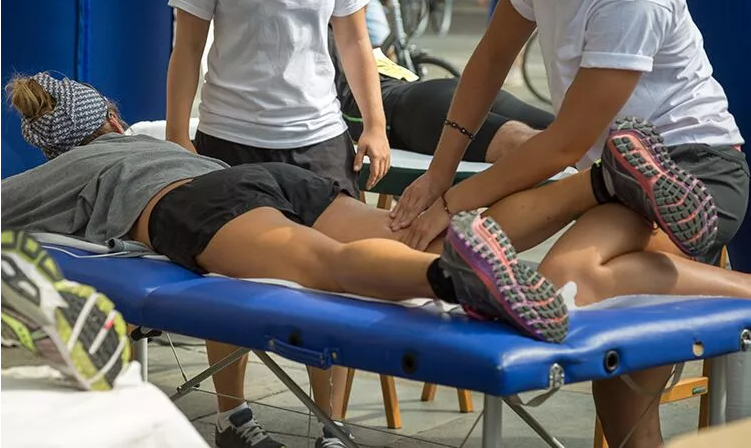
If there’s one recovery technique that is most popular among athletes, it’s massage, but all of that being said, the scientific evidence for whether it works or is doing something meaningful from a physiological perspective is pretty slim,” Aschwanden says. “But what makes massage really helpful is that it feels good and is a way of setting aside some time to relax and check in with your body and how you’re feeling during a little downtime.”
3) Use a foam roller:
a) Back

How to foam roll your upper back:
- Sit on the ground with your knees bent and the foam roller behind you.
- Lower your back onto the foam roller and adjust until your mid-back is laying on it, with your shoulders aligned with the ends of the roller with your arms crossed.
- Lift your glutes and keep your core engaged as you roll back and forth to feel a massage in your upper back, rolling down no further than where your rib cage ends. Roll from right to left on any areas that need more pressure.
b) Shouders:
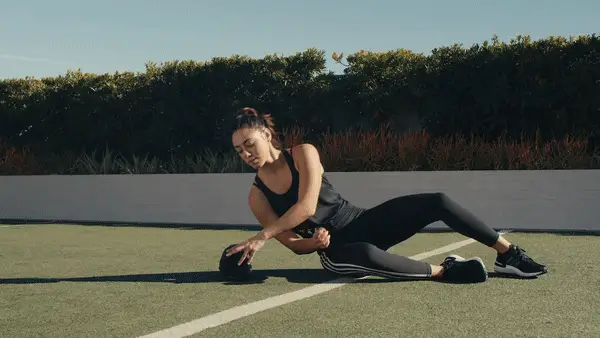
How to foam roll your shoulders:
- Lay on your side with the foam roller beneath your shoulder.
- Keeping your arm straight, gently shift your weight to massage your shoulder on the foam roller.
- Switch sides and complete with other shoulder.
c) IT BAND:
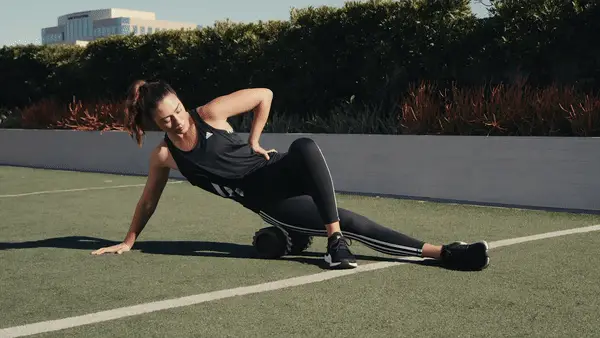
How to foam roll your IT band:
- In a side plank position, place the foam roller under your IT band (the outside of your leg), and cross your upper leg in front of you for support.
- Use your hand and supporting leg to roll from your hip to your knee, stopping on any points that need more pressure.
- If this is too painful, put more weight into your supporting leg and hand to take some pressure off your IT band as it rolls out.
4) Try compression gear:

It’s not just to show off all the work you’ve put in. A 2017 study found that compression gear reduced muscle soreness and made muscle recovery faster due to constricting your muscles and preventing fluid buildup post-workout while increasing blood flow. This helped remove an enzyme in your muscles called creatine kinase, which can cause ache.
In the healthy athlete, compression gear serves a different role. Most who choose to wear compression garments anticipate that they will experience improved circulation and mechanics. It is thought that compression garments may reduce muscle oscillations which will theoretically optimize the contraction direction of muscle fibers, resulting in improved mechanical efficiency and running kinematics.
5) Eat a balanced diet:
You may already know that certain nutrients (like carbohydrates and fats) help fuel a workout. But did you know that what you eat affects how you recover from your workout as well?
Carbohydrates help replenish the energy you used up during your workout and eating protein helps promote muscle repair. “After exercising, your body is craving the building blocks it needs to refuel and recover,” says Nasrallah. “Within 30 minutes of finishing a workout, I usually recommend a quick protein-carb snack, like chocolate milk. In addition to that, a full recovery meal should be eaten within 2 hours after you finish exercising.”
Carb-rich foods to include in your post-workout recovery meal include:
- Oatmeal
- Whole wheat pasta
- Sweet potatoes
- Quinoa
- Fruits, such as berries or bananas
Protein-rich foods to include in your post-workout recovery meal include:
- Eggs
- Cottage cheese
- Greek yogurt
- Salmon
- Chicken
- Tuna
6) Drink smoothie juice Made for the Endurance Athlete:
Smoothies are the perfect summertime food: cold, no need to chew or turn on an oven, and ready in minutes. They’re good both pre- and post-workout, making them ideal for endurance athletes or anyone who needs an easy nutritional boost.
